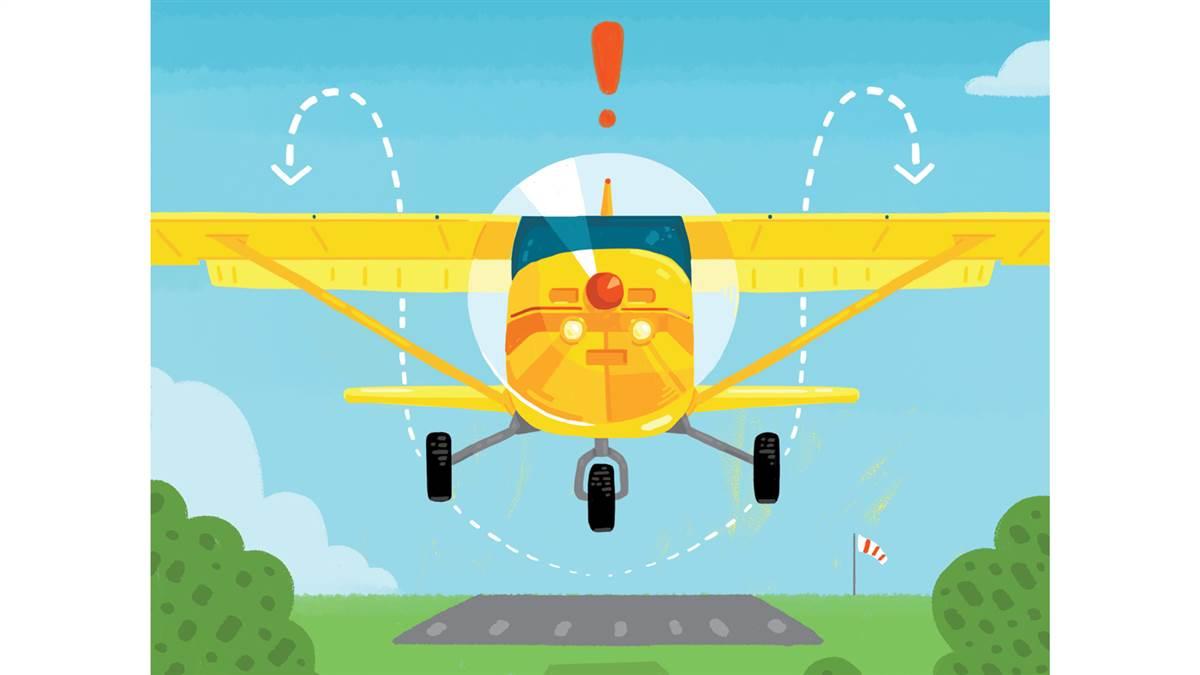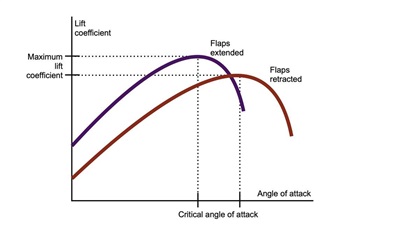That sinking feeling
Smooth out your flaps technique

 Doing so can shorten the ground roll and provide a steeper climb angle. Once any obstacles are cleared, retracting the flaps means less drag, a more efficient climb rate, and better engine cooling.
Doing so can shorten the ground roll and provide a steeper climb angle. Once any obstacles are cleared, retracting the flaps means less drag, a more efficient climb rate, and better engine cooling.
All too often, while the flaps are moving back up, we start to accelerate downward and, at a mere few hundred feet above the ground, the feeling is just plain creepy. I speculate that general aviation novices would even find it alarming. But that sinking feeling doesn’t have to happen. A modified technique can assist with more than passenger comfort—it’s important for flight safety too.
Our bodies detect acceleration easily. When a car starts moving, we are pressed against the seat backs because we accelerate from rest to the speed the driver chooses for travel down the road. Once we reach a constant velocity, we can reach around the car with ease since all forces are in balance and acceleration becomes zero.
The same is true in an airplane. When all forces (lift, weight, thrust, and drag) are in balance, such as in cruise flight or during a constant velocity climb or descent, the aircraft acceleration is zero.
The lift generated by the aircraft is proportional to:
(wing area) • (lift coefficient) • (velocity)2 where the lift coefficient CL is a function of angle of attack (see above). Any change in one of these quantities causes the lift to change. That, in turn, results in accelerated flight if the other forces stay the same. Extending or retracting flaps is one way to make a change in the lift coefficient and the airplane will initially accelerate up or down accordingly. Some flap designs increase the wing area as well, but for a simpler discussion let’s just assume the wing area stays constant with changing flap deflection. That makes lift proportional to CLV2. All other factors equal, deploying flaps will increase CL and cause the aircraft to momentarily accelerate upward and by retracting them, we get that sinking feeling.
All too often, while the flaps are moving back up, we startto accelerate downward and, at a mere few hundred feet above the ground, the feeling is just plain creepy.
In preparation for landing, it’s common to lower the flaps on the downwind leg of the pattern. To compensate for the initial ballooning effect, the pilot pushes forward on the yoke to maintain altitude. The pilot then uses pitch control to maintain a responsible airspeed and throttle to determine the descent profile toward the runway.
When flaps are retracted, the lift coefficient decreases and, with no other changes, the aircraft initially accelerates toward the ground. Interestingly, the remedy for that sinking feeling also involves pushing forward on the yoke to increase the airspeed. If the pilot can time that increase in airspeed to compensate for the decreasing lift coefficient, lift remains constant and the aircraft maintains the original climb profile. Although that can be tough to do exactly right, pushing forward while retracting the flaps can at least lessen that discomfort.
Beyond incorporating the technique to inspire confidence in your passengers, getting into the habit of increasing airspeed before and during flap retraction can reap benefits in terms of safety as well. Unfortunately, when an airplane starts accelerating toward the ground or when the nose points toward it, pilots sometimes pull back on the yoke. This only exacerbates the situation and increases the likelihood of a stall.
If you and your passengers have been experiencing that sinking feeling, maybe it’s time to smooth out your piloting technique.It’s a great excuse to go fly.
I witnessed this reaction myself on a recent practical exam I gave that terminated with a landing at my own airport. The winds were gusty and about 50 feet above the ground, the private pilot candidate wisely initiated a go-around in the Diamond DA40 but did so by first retracting the flaps. As we sank toward the runway, he pulled back on the control stick, which reduced the airspeed and further accelerated us toward the ground with the stall warner sounding. I pushed forward on the stick to reduce the angle of attack and avoid a stall and then initiated a climb away from the airport at the best rate of climb airspeed. Proper technique during a go-around maneuver, when flaps are more fully extended, can be even more critical than that for a short-field takeoff.
The AOPA Air Safety Institute Traffic Pattern Tragedy Accident Case Study details the June 2016 flight of a Cirrus SR20 from Norman, Oklahoma, to the busy Houston, Texas, William P. Hobby Airport. During an attempt to sequence the Cirrus among myriad airliner operations, controllers issued the Cirrus pilot instructions to go around. On the next two approaches, the pilot had trouble losing sufficient altitude to make a safe landing on the runway. While climbing away from the airport for the third time, she lost control of the aircraft and the airplane spun into the ground, killing all three occupants. The avionics data shed light on the procedures she used during the go-arounds. During the three sets of flap retractions, the airspeeds were respectively 76 KIAS, then 69 KIAS, and finally 62 KIAS. The flaps-up stall speed of the SR20 in the shallow bank used during the final go-around is about 69 KIAS so retracting the flaps at 62 KIAS was bound to be a problem. Cirrus recommends retracting flaps at an airspeed no lower than 81 KIAS in the SR20.
It might be tempting to think that we would never find ourselves in this pilot’s shoes but I am continually amazed by what we (myself included) can do when distracted, nervous, or overloaded. Possibly all three contributed to the sad outcome of this flight.
The best antidote to such a situation is continual training so that proper reactions are second nature. Pilots should be spring-loaded to push forward on the yoke before and during flap retraction every time. If you and your passengers have been experiencing that sinking feeling, maybe it’s time to smooth out your piloting technique. It’s a great excuse to go fly.


